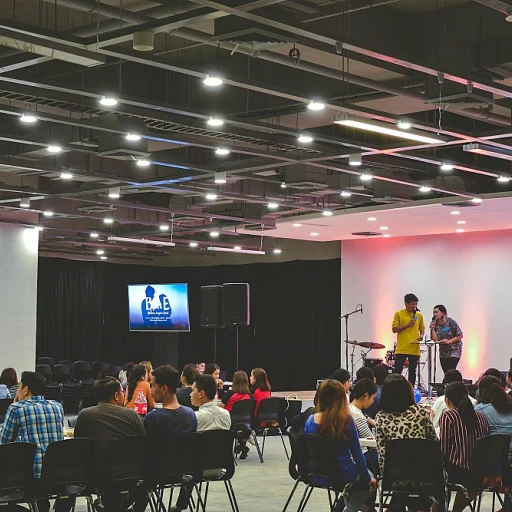
Understanding Centralized HR Analytics
Centralized human resources analytics is a transformative approach that streamlines the way organizations handle their human capital. By consolidating various facets of HR management into one cohesive system, businesses can harness more insightful and actionable data. This methodology is particularly impactful when it comes to tracking the employee lifecycle, managing employee databases, and ensuring real-time insights into payroll and benefits administration.The Role of Centralization in HR Analytics
When data from various HR functions such as performance management, leave tracking, and compensation management are centralized, it opens pathways for more sophisticated data analysis. This integration facilitates better compliance and management employee services, including benefits management and insurance administration. Centralized software solutions like Acumatica allow businesses to keep all necessary management tools in one place, thereby enhancing data accessibility and employee efficiency.Streamlining Data for Improved Efficiency
A centralized HR system allows organizations to cut down on time-consuming administrative tasks, enabling a focused approach on strategic initiatives. This efficiency is vital for crafting effective performance management systems and ensuring that the right services are available through an employee service portal. With a system that manages payroll intricacies and tracks employee leave in real-time, companies can ensure what is known as "pay team" precision. By reserving more time for analyzing employee data, businesses are more equipped to write reviews and make data-driven decisions for both the business and their top talent.Understanding the Importance of a Compa Ratio Calculator in HR Analytics can further elucidate how these centralized systems ensure fair and equitable compensation strategies, fostering a more connected and informed human capital management process.
Key Benefits of Centralized HR Systems
Enhanced Efficiency and Streamlined Operations
Centralized HR systems provide a comprehensive solution to manage the complexities of employee management. By consolidating data into one platform, businesses can streamline operations, reducing the redundancy and errors that often plague fragmented systems. This centralization allows for efficient management of the employee lifecycle, from recruitment through performance management and leave tracking. Comprehensive systems, like Acumatica, integrate payroll management, benefits administration, and insurance administration, offering seamless employee service tools.Improved Data Accuracy and Real-Time Access
Accurate data is vital for making informed business decisions. Centralized HR systems ensure that data is consistent and up-to-date, which is crucial for insights into human capital management. With real-time access, management can quickly retrieve and analyze information across payroll, compensation management, and benefits management. This quick access allows teams to promptly address compliance issues and optimize resources effectively.Comprehensive Employee Insights
Gaining clear, actionable employee insights is a significant benefit of centralized HR analytics. By having an all-encompassing view through an employee database, businesses can track top talent and better understand their workforce. This comprehensive insight supports strategic decision-making in areas such as performance management and human resources development. To further explore these priorities, consider these essential questions to ask your HR department.Cost Savings and Risk Management
Investing in centralized HR solutions can lead to cost savings and improved risk management. By leveraging technology that supports payroll and compliance services, businesses can reduce administrative burdens and avoid potential penalties related to benefit services and legal discrepancies. In addition, software solutions that offer centralized benefits management and compensation strategies enable organizations to better compensate employees without exceeding budget constraints.Challenges in Implementing Centralized HR Analytics
Tackling Implementation Setbacks
Implementing centralized HR analytics can present an array of challenges, despite the numerous advantages it offers. These obstacles often revolve around managing the influx of comprehensive employee data and converting it into meaningful insights. The transition to centrally managed systems like Acumatica requires not only an investment in reliable software but also the right strategy to ensure a seamless integration with existing management practices.Confronting Data Integration and Quality
One of the primary hurdles is the integration of disparate data sources into a cohesive system. Streamlining the employee database, payroll, leave tracking, and benefits administration into a unified structure often poses challenges in data quality and consistency. Human resources departments must ensure that data entered into the system is accurate and updated in real time.Ensuring Compliance and Privacy
Navigating the complex landscape of data privacy laws and compliance requirements is another significant barrier. Handling sensitive employee information for compliance and insurance administration necessitates stringent data access controls and secure management protocols. Tools like those offered by CBIZ and Acumatica aid businesses by providing service portals equipped with the necessary safeguards to maintain compliance.Adapting to Change with Employee Engagement
Change management is a challenge that organizations frequently encounter during the implementation of centralized HR analytics. Encouraging employees and managers to embrace new systems for performance management, benefits management, and compensation management involves strategic communication and training initiatives. Engaging management employees in this transition is crucial to minimizing operational disruptions and fostering an environment conducive to productivity.Maintaining Flexibility and Scalability
The dynamic nature of business needs requires HR analytics solutions to be both flexible and scalable. Systems must support varying demands that come with managing the employee lifecycle, from recruitment of top talent to eventual retirement or exit. A nimble system helps adapt to these fluctuations without compromising on the efficient management of human capital. Navigating these challenges calls for a methodical approach, but companies that successfully address these obstacles can reap substantial rewards. For more insights into overcoming challenges in HR analytics, check out this article about insights from recent victories in discrimination cases.Best Practices for Effective Centralized HR Analytics
Creating a Cohesive System: Essential Guidelines
To maximize the value of centralized HR analytics, adopting best practices ensures that organizations not only manage but also thrive in increasingly complex environments. Here’s how to optimize your HR systems:- Comprehensive Data Integration: A successful centralized HR system requires the integration of various data sources to build a robust employee database. By centrally consolidating information on benefits administration, payroll, employee lifecycles, and other crucial aspects, businesses can gain holistic insights for strategic decision-making.
- Utilizing Advanced Software Tools: Incorporating advanced service tools such as Acumatica can facilitate seamless management and data tracking. Ensuring all service aspects—from human capital tracking to compensation management—are centrally managed enhances efficiency and reduces manual errors.
- Regular Compliance and Security Checks: Security breaches can result in severe consequences. Regularly updating your compliance measures and safeguarding employee data ensures that sensitive information remains secure. Secure payroll management and insurance administration are critical in maintaining trust among employees and stakeholders.
- Focus on Performance Management: Real-time performance management is pivotal in recognizing top talent and fostering an environment of growth. Empower your management employee systems to provide intuitive access to performance insights, enabling proactive and informed decisions that benefit both employees and the organization as a whole.
- Enhancing Employee Self-Service: Integrating a comprehensive service portal enables employees to manage aspects such as leave tracking and benefits administration independently. This not only saves time for HR teams but also improves employee satisfaction by providing them direct access to essential services.
Case Studies: Success Stories in Centralized HR
Real-World Successes with Centralized HR Systems
Centralized HR analytics systems have transformed the way businesses operate by providing crucial insights into human capital management. Companies that have embraced these systems have witnessed significant enhancements in efficiency and decision-making. One prominent example of successful implementation is a leading financial service company that harnessed centrally managed HR analytics to streamline its payroll management. By integrating comprehensive payroll software, the company gained real-time access to employee data, which facilitated accurate leave tracking and benefits administration. This shift not only reduced payroll processing time but also ensured compliance with all relevant regulations. Another success story involves a global pharmaceutical business that used centralized HR tools to drastically improve employee lifecycle management. By implementing a cohesive employee database system, the company was able to provide employee self-service portals that enhanced the overall employee experience and boosted retention rates. Notably, the company's use of real-time tracking services allowed for seamless benefits management and insurance administration. Benefits Realized by Companies:- Enhanced employee lifecycle management and compensation management.
- Improved efficiencies in handling employee benefits and insurance.
- Cost savings through streamlined management and time-reduction in payroll processing.
- Increased compliance with regulations and effective management of employee databases.
Future Trends in Centralized HR Analytics
The Evolution and Impact of HR Analytics Moving Forward
As centralized HR analytics continues to transform human resources, its future trends hold immense promise for organizations looking to optimize their HR functions. With the ever-growing influence of data analytics, businesses are focusing on integrating advanced technologies and tools into their HR practices.- Real-Time Insights: As the demand for real-time data increases, HR systems are evolving to provide instant access to valuable insights. This immediate feedback loop is essential for timely decision-making in areas such as employee database management and performance tracking.
- Enhanced Employee Lifecycle Management: Future HR systems will likely focus on seamless management of the entire employee lifecycle. From onboarding to compensation management and leave tracking, organizations will invest in comprehensive software solutions like CBIZ and Acumatica to streamline and centrally manage these processes.
- Integration of Artificial Intelligence: The integration of AI into HR functions is poised to revolutionize predictive analytics, enabling businesses to anticipate workforce trends and proactively manage human capital and compliance issues. AI-powered chatbots and service portals will enhance not only employee interactions but also access to HR services.
- Data Security and Privacy: With increased data collection for better decision-making, the challenge of ensuring data privacy and compliance becomes paramount. Future systems must prioritize secure data management and align with regulations aimed at protecting sensitive employee data.
- Adaptation and Flexibility: Organizations will need HR systems that offer flexibility and adaptability to cater to the dynamic nature of business environments. The ability to scale services and software to manage varying employee and business needs will set companies apart from their competitors.













